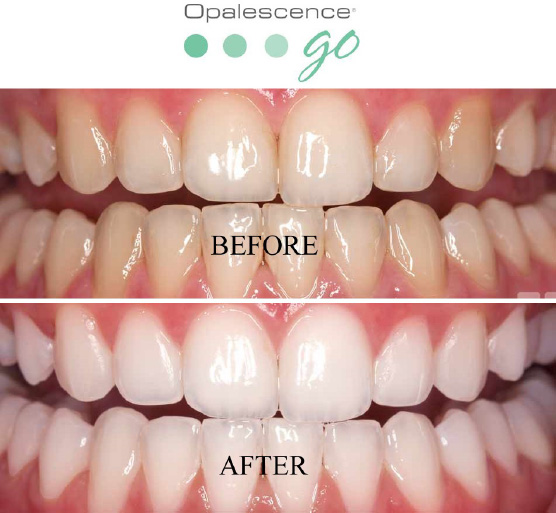Welcome to the world of healthy gums! In this article, you will learn about preventing gum disease through oral hygiene practices. From the mild symptoms of gingivitis to the severe consequences of periodontitis, taking care of your gums is essential for your overall dental health. By implementing regular brushing, flossing, and dental check-ups into your routine, you can keep your gums happy and healthy for years to come. So let’s dive in and discover how to prevent gum disease and maintain a beautiful smile! Have you ever wondered how to prevent gum disease through oral hygiene practices? Well, worry no more because we have all the information you need to keep your gums healthy and disease-free. Read on to learn about the causes of gum disease, the importance of oral hygiene, and practical tips to maintain good oral health.
Understanding Gum Disease
Gum disease, also known as periodontal disease, is a common oral health issue that affects a large portion of the population. It ranges from mild gingivitis to severe periodontitis, with varying symptoms and complications. Gingivitis is the initial stage of gum disease, characterized by red, swollen gums that may bleed during brushing or flossing. If left untreated, gingivitis can progress to periodontitis, where the gums pull away from the teeth, forming pockets that become infected.
Recognizing Symptoms of Gingivitis
One of the key factors in preventing gum disease is being able to recognize the symptoms of gingivitis. If you notice that your gums are red, swollen, and bleed easily when you brush or floss, you may be experiencing early signs of gingivitis. It is essential to address these symptoms promptly to prevent further progression of the disease.
Understanding the Progression to Periodontitis
If gingivitis is left untreated, it can progress to periodontitis, a more severe form of gum disease. In periodontitis, the gums begin to pull away from the teeth, creating pockets that can become infected. This infection can lead to the deterioration of the bone and tissues that support the teeth, ultimately resulting in tooth loss. Understanding the progression of gum disease is crucial in taking proactive steps to prevent its advancement.

This image is property of pixabay.com.
Importance of Good Oral Hygiene
Maintaining good oral hygiene is the cornerstone of preventing gum disease and other oral health issues. Proper oral hygiene practices, such as brushing, flossing, and regular dental check-ups, can help remove plaque and prevent the buildup of harmful bacteria in the mouth. By prioritizing your oral health, you can significantly reduce your risk of developing gum disease and other dental problems.
The Role of Plaque in Gum Disease
Plaque, a sticky film of bacteria that forms on the teeth, is a primary contributor to gum disease. When plaque accumulates along the gumline, it can irritate the gums and lead to inflammation. Over time, if plaque is not effectively removed through proper oral hygiene, it can harden into tartar, which cannot be removed by brushing alone. Tartar buildup can then contribute to the development of gum disease. Understanding the role of plaque in gum disease highlights the importance of consistent oral hygiene practices.
Benefits of Regular Brushing and Flossing
Brushing and flossing are essential components of a good oral hygiene routine. Brushing your teeth twice a day helps remove plaque and food particles from the surfaces of your teeth, while flossing cleans between the teeth and along the gumline. By incorporating both brushing and flossing into your daily routine, you can effectively prevent the buildup of plaque and reduce your risk of developing gum disease. Regular brushing and flossing also promote fresh breath, healthy gums, and overall oral health.
Importance of Dental Check-Ups
In addition to daily brushing and flossing, regular dental check-ups are crucial for maintaining good oral health. During a dental check-up, your dentist will examine your teeth, gums, and overall oral health, looking for signs of gum disease or other dental issues. Professional cleanings performed by a dental hygienist can help remove plaque and tartar that may have accumulated on your teeth. By scheduling regular dental check-ups, you can stay on top of your oral health and address any concerns before they escalate.

This image is property of pixabay.com.
Practical Tips for Preventing Gum Disease
Preventing gum disease is a proactive process that requires consistent effort and dedication to good oral hygiene practices. By following these practical tips, you can reduce your risk of developing gum disease and maintain healthy gums for years to come.
Tip #1: Brush Your Teeth Properly
One of the most important steps in preventing gum disease is brushing your teeth properly. Use a soft-bristled toothbrush and fluoride toothpaste to gently brush your teeth in a circular motion, paying close attention to the gumline. Brushing your teeth twice a day for at least two minutes each time can help remove plaque and prevent gum disease.
Tip #2: Floss Daily
In addition to brushing, flossing daily is essential for removing plaque and food particles from between your teeth. Use a gentle sawing motion to guide the floss between your teeth and along the gumline. By incorporating flossing into your daily routine, you can prevent the buildup of plaque and reduce your risk of gum disease.
Tip #3: Use Antiseptic Mouthwash
Antiseptic mouthwash can be a helpful addition to your oral hygiene routine, as it can kill bacteria that cause gum disease and bad breath. Choose an antiseptic mouthwash that is alcohol-free and contains fluoride for optimal protection against plaque and gum disease. Incorporate mouthwash into your oral care routine by swishing it around your mouth for 30 seconds after brushing and flossing.
Tip #4: Eat a Balanced Diet
A healthy diet plays a significant role in maintaining good oral health and preventing gum disease. Avoiding sugary and acidic foods and beverages can help reduce the risk of tooth decay and gum disease. Instead, focus on consuming a balanced diet rich in fruits, vegetables, whole grains, and lean proteins to support overall oral health. Drinking plenty of water throughout the day can also help keep your mouth clean and hydrated.
Tip #5: Quit Smoking
Smoking is a significant risk factor for gum disease and other oral health issues. Smoking weakens the immune system, impairs blood flow to the gums, and reduces the body’s ability to fight off infections. By quitting smoking or avoiding tobacco products, you can significantly lower your risk of developing gum disease and improve your overall health.
Tip #6: Manage Stress
Stress can have a negative impact on oral health, as it can weaken the immune system and increase inflammation in the body. Chronic stress can also contribute to teeth grinding, jaw clenching, and other habits that can damage the gums and teeth. Engaging in stress-reducing activities such as exercise, meditation, yoga, or deep breathing can help lower stress levels and improve overall oral health.

This image is property of pixabay.com.
Conclusion
Preventing gum disease through oral hygiene practices is essential for maintaining healthy gums, preventing tooth loss, and promoting overall oral health. By understanding the causes of gum disease, the importance of good oral hygiene, and practical tips for prevention, you can take proactive steps to protect your gums and maintain a healthy smile for years to come. Remember to brush and floss daily, schedule regular dental check-ups, eat a balanced diet, and avoid tobacco products to keep your gums healthy and disease-free. Your smile is worth the effort, so prioritize your oral health and prevent gum disease today.



